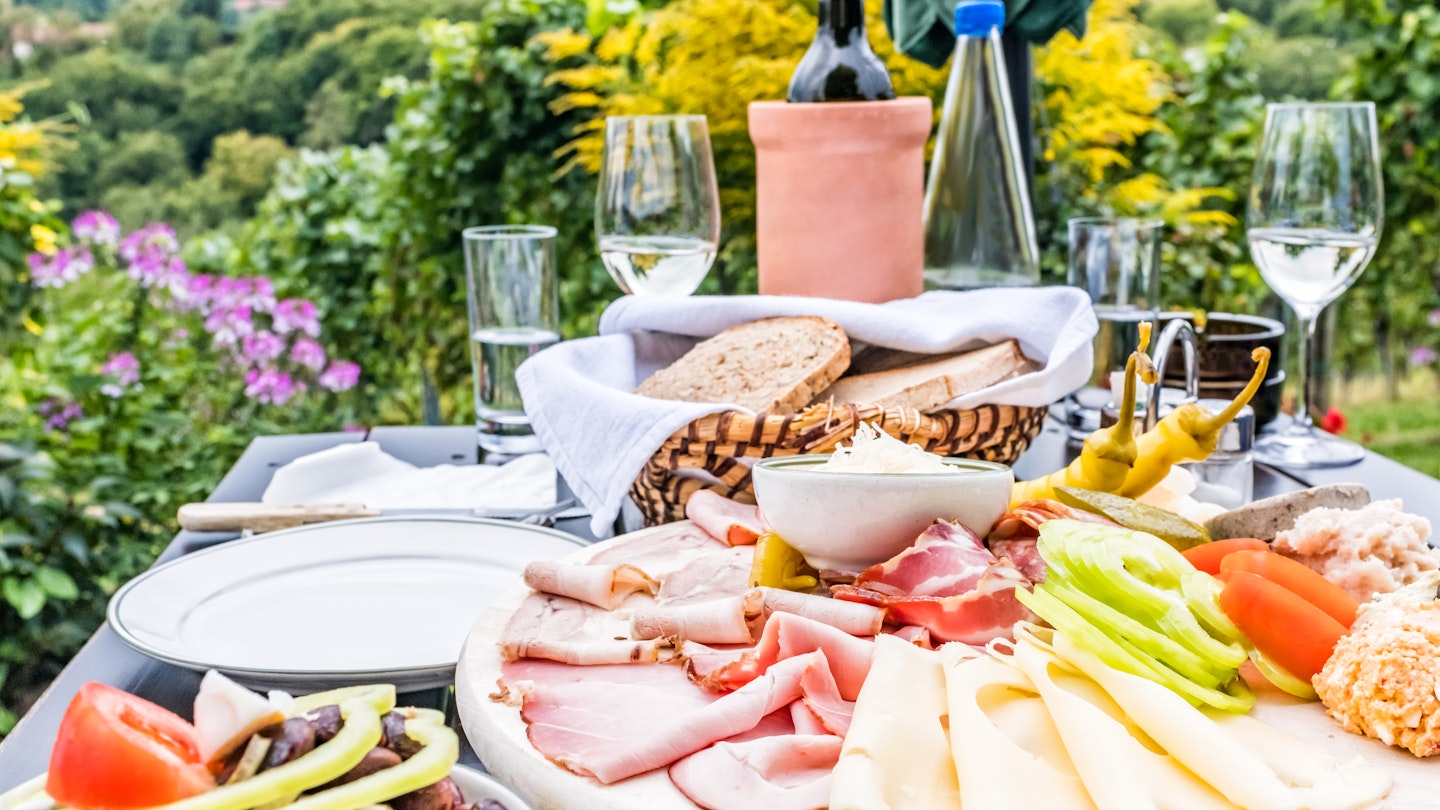A Culinary Journey Through Austria
Whether in a Beisl (bistro) or Buschenschank (wine tavern), mountain inn or Michelin-starred restaurant, Austrian fare is served with soul and a dedication to local suppliers, seasonal produce, and the slow-food movement. Traditional foods rooted in carb-laden fuel for mountain toil and dishes dripping with imperial legacy still top the menu. However, new-wave experimentation, reinvention, and a surge of international kitchens are pushing Austria beyond schnitzel and into the culinary spotlight.
Try Vienna’s Signature Dishes
Your first encounter with traditional Austrian fare will likely include Vienna’s tasty trio of signature dishes:
- Wiener Schnitzel (flattened, breadcrumbed veal cutlet served with potato salad)
- Emperor Franz Joseph’s favorite Tafelspitz (boiled beef, served with roasted potatoes, vegetables, and horseradish sauce)
- Gulasch (paprika-spiced meat stew that originated in Hungary)
If you still have room for dessert, consider trying Apfelstrudel (a flaky pastry with apples and raisins) or Kaiserschmarrn (shredded fluffy pancake served with fruit compote). At any Würstelstand (sausage stand), you’ll find the legendary Käsekrainer (a sausage filled with tiny cubes of cheese) for a late-night snack.
Experience Austria’s Michelin-Starred Cuisine
While traditional dishes are a feast in their own right, the meals worth splurging on come from Austria’s 16 Michelin-starred restaurants—15 of which are in Vienna and Salzburg. If you’re seeking an upscale culinary experience, consider these renowned venues:
- Steirereck in Vienna, an exemplary fine-dining restaurant
- Tian, a gourmet vegetarian establishment known for its rare ingredients
- Ikarus, located in Salzburg Airport’s architectural showpiece, Hangar-7, featuring guest chefs monthly
- Glass Garden at Hotel Schloss Mönchstein, offering a vegan menu
Drink in the Coffee-House Culture (With a Side of Cake)
Vienna’s love affair with coffee began when the Turks left behind bags of beans after the Siege of Vienna in 1683. Now recognized on UNESCO’s List of Intangible Cultural Heritage, the coffee-house culture thrives in cozy, wood-paneled rooms adorned with bentwood chairs and newspapers. Here, waiters in formal attire serve Wiener Küche (Viennese cuisine), coffee, and pastries, creating an inviting atmosphere perfect for writers, artists, and thinkers to gather.
When in Vienna, don’t miss iconic coffee houses such as Café Central, frequented by poets and revolutionaries, or Café Sacher, famous for its Sacher Torte (glazed chocolate cake with apricot jam).
Quaff Austrian Wine on a “Heuriger-hop”
Enjoy a glass of Achterl (a 0.125L glass of wine) directly from the vintner in Austria’s picturesque hilltop vineyards, especially in rustic Heuriger (wine taverns). These charming venues allow you to savor local wines while enjoying the stunning landscape. For example, in Lower Austria’s Weinviertel (wine quarter), 14,000 winemakers produce a third of the country’s wine.
Moreover, with Vienna itself surrounded by 700 hectares of vineyards, it is the only European capital to grow wine within its city limits, making the nearby Grinzing district an excellent start to your wine journey.
Feast on Regional, Seasonal, and Sustainable Produce
In Austria, the farm-to-table philosophy is not just a trend; it’s a way of life. Numerous restaurants proudly prepare dishes using homegrown or locally sourced artisanal produce, ensuring that menus reflect the seasonal availability of ingredients. With regions like Carinthia leading the way in promoting small-scale and biodiverse food movements, visitors can delight in sustainable and local food culture across Austria.
Traditional Austrian Food Worth Trying
Austria’s rich culinary heritage is filled with delectable traditional dishes. For instance, Waldviertel Mohn (poppy seeds) and seasonal Wachau apricots are used to craft a variety of sweet treats. Meanwhile, the famed pumpkin seed oil from Styria enhances many local dishes like Backhendlsalat (fried chicken with potato salad).
Additionally, the mountains are synonymous with cheese production, particularly in Vorarlberg which is renowned for its mountain cheese. For an energizing post-hike meal, indulge in Käsknöpfle—egg noodle dumplings with an abundance of cheese.
Vegetarians and Vegans
While Austria’s cuisine traditionally centers around meat, vegan and vegetarian menu options are increasingly available, especially in larger cities. Establishments like Veggiezz and Swing Kitchen lead the way in offering delicious and affordable meals that cater to plant-based diets.





